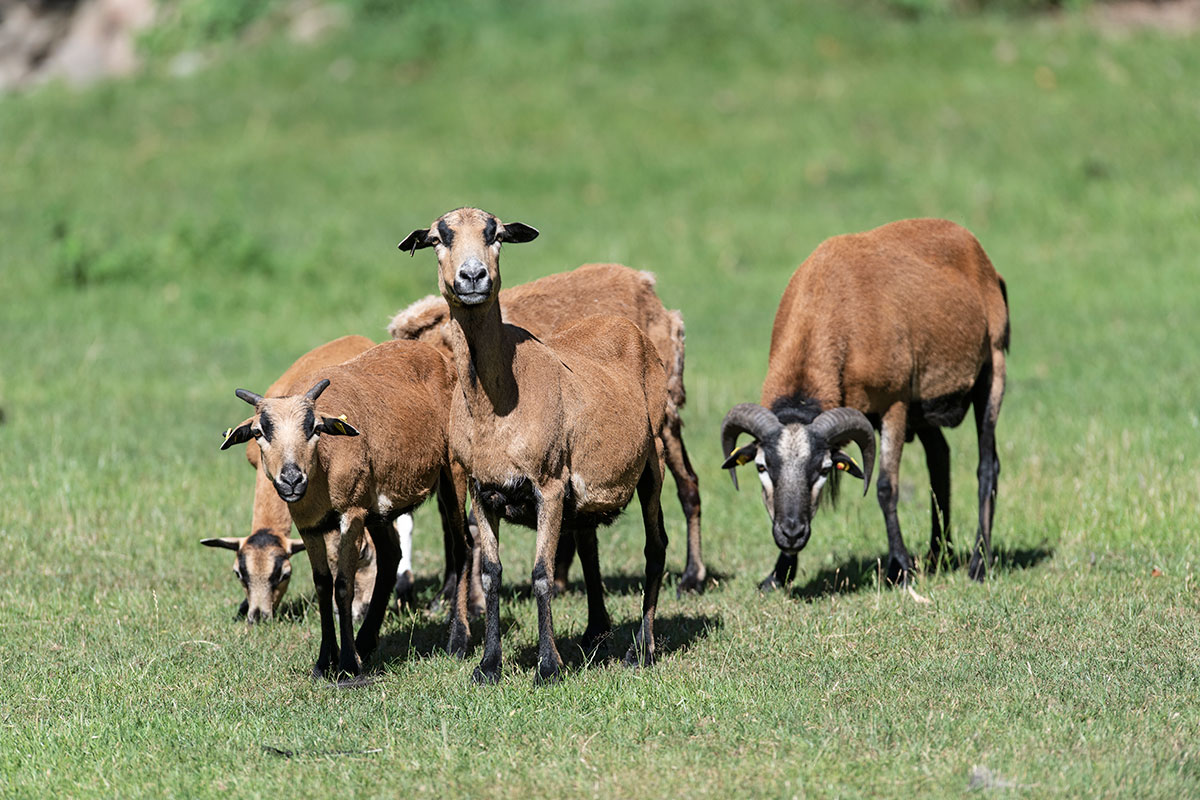Africa

Ostrich
The oldest known documents describing human appreciation of the value of the ostrich and its products are 7,500 years old. Ostrich feathers were used for ornamentation in many countries for thousands of years. Even the fat of the animals was believed to have special powers, which is why the Romans paid a lot for it.
Richly decorated cups were made from the eggs during the Middle Ages and the eggs are still used for transporting water in some regions of Africa. Ostriches are now mainly bred for their meat, which is becoming increasingly popular. It is very low in fat and is therefore considered particularly healthy.

Boer goats and Cameroon sheep
Both species of animal are ideally adapted to the dry and hot climatic conditions of Africa, and are often kept in mixed herds. Whereby the goats are mostly the leaders. The animals themselves can still find food in places that cows could no longer survive. If necessary they can even eat bushes or brambles. The Boer goat (see picture) is deliberately bred in South Africa for its meat, and they are not very often found in the rest of Africa.
Unlike our domestic sheep, Cameroon sheep have a coat made of hair and not wool. It moults twice a year.

Watussi cattle
East African Watussi cattle have the thickest and longest horns of all cattle. The more cattle a man has in his herd, and the larger their horns, the greater his status. Even today, the fresh blood of living animals is drunk as a source of protein during times of need.

Water buffalo
Water buffalo originally came from India but now live all over the world in tropical marshy areas. They are ideal working animals for planting rice and have therefore been kept as domestic animals for thousands of years. Real mozzarella cheese is made from the milk of water buffalo.
